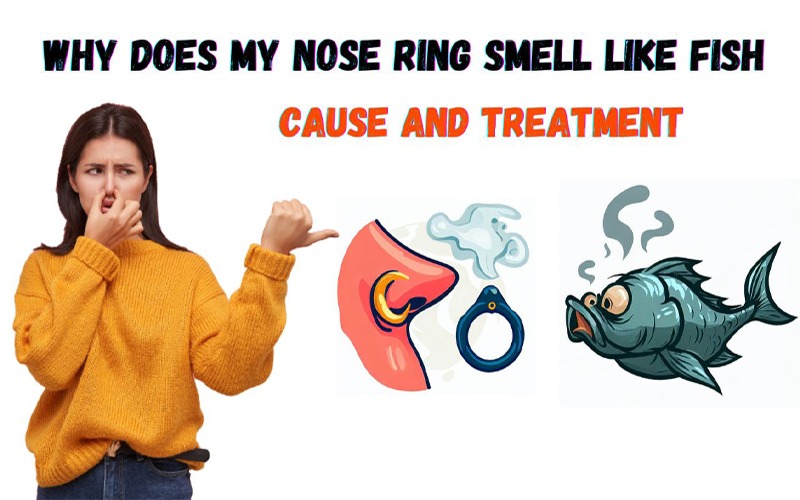Nose piercing has become increasingly popular in recent years, with many people choosing to decorate their noses with a variety of jewelry. However, sometimes things can go wrong, and the placement of the piercing can be incorrect. This can be frustrating and even painful for the person who has had the piercing, and they may be wondering what they can do to fix the problem.
If a nose piercing is placed incorrectly, it can cause a number of issues. For example, if the piercing is too close to the edge of the nostril, it may be more prone to infection and may take longer to heal. Additionally, an incorrectly placed piercing may not be as aesthetically pleasing as one that is placed in the correct location. It is important for anyone considering a nose piercing to do their research and choose a reputable piercer who has experience and knowledge in proper placement techniques.
If you have already had a nose piercing placed in the wrong location, there are a few things you can do to address the issue. This article will explore some of the options available for correcting a nose piercing that is in the wrong place, as well as provide tips for preventing future issues with piercing placement.
Identifying Incorrect Nose Piercing Placement
When it comes to nose piercing, placement is crucial. Incorrect placement can lead to a host of problems, from discomfort and irritation to infection and scarring. Here are some signs that your nose piercing may have been placed incorrectly:
- Asymmetry: If one side of the piercing sits higher or lower than the other, it may be a sign of incorrect placement.
- Misalignment: If the piercing is not centered on the nose, it may be too close to the edge of the nostril or too far up the nose.
- Shallow or deep piercing: If the piercing is too shallow, it may migrate or even fall out. If it’s too deep, it can cause discomfort and increase the risk of infection.
- Piercing through cartilage: Piercing through cartilage, rather than the soft tissue of the nostril, can cause more pain and take longer to heal.
If you suspect that your nose piercing has been placed incorrectly, it’s important to seek the advice of a professional piercer. They can assess the placement and recommend the best course of action. In some cases, the piercing may need to be removed and re-pierced in the correct location.
Remember, proper placement is key to a successful and comfortable nose piercing experience.
Immediate Steps After Wrong Placement
Assessing the Situation
The first step after discovering a nose piercing in the wrong place is to assess the situation. This involves checking the placement of the jewelry and determining whether it is causing any discomfort or pain. If the piercing is too close to the edge of the nostril or too low on the nose, it can cause irritation and even infection. It is important to take immediate action to prevent further damage.
Removing the Jewelry
If the piercing is in the wrong place, it is important to remove the jewelry as soon as possible. This will prevent further irritation and allow the skin to heal. To remove the jewelry, gently twist it in a clockwise direction until it comes out. Do not pull or force the jewelry out, as this can cause additional pain and damage to the skin.
Cleansing the Area
After removing the jewelry, it is important to cleanse the area thoroughly to prevent infection. Use a gentle, fragrance-free soap and warm water to clean the area around the piercing. Avoid using harsh chemicals or alcohol-based products, as these can further irritate the skin. Gently pat the area dry with a clean towel, being careful not to rub or tug at the skin.
Following these immediate steps after wrong placement can help prevent further damage and promote healing. If the piercing was done by a professional, it is important to contact them immediately to discuss next steps. If the piercing was done at home, it may be necessary to seek medical attention to ensure proper healing and prevent infection.
Consulting a Professional
If you have had a nose piercing done and suspect that it has been placed incorrectly, it is important to seek professional advice. A professional piercer or a medical practitioner can help you assess the situation and determine the best course of action.
Seeking a Piercer’s Advice
The first step in seeking advice is to consult with a professional piercer. A piercer can help you determine whether your piercing has been placed incorrectly and suggest options for correcting the problem. They may also be able to recommend a reputable piercer who specializes in nose piercings.
During your consultation, the piercer will examine your piercing and assess the placement. They may also ask you questions about your piercing history, such as when it was done and what type of jewelry you are using. Based on this information, they can recommend a course of action, which may include removing the jewelry, re-piercing the area, or leaving the piercing as is.
Medical Consultation for Complications
If you are experiencing complications from your piercing, such as infection or scarring, it is important to seek medical advice. A medical practitioner can help you determine the cause of the problem and recommend appropriate treatment.
During your consultation, the medical practitioner will examine your piercing and assess the extent of the problem. They may also ask you questions about your medical history and any medications you are taking. Based on this information, they can recommend a course of action, which may include antibiotics, topical treatments, or surgery.
In either case, it is important to follow the advice of the professional you consult with. Do not attempt to correct the problem yourself or ignore the issue, as this can lead to further complications. By seeking professional advice, you can ensure that your nose piercing is properly placed and that any problems are addressed in a timely and effective manner.
Long-Term Care and Monitoring
Healing Process
After getting a nose piercing in the wrong place, the healing process may take longer than usual. It is important to clean the piercing regularly with saline solution or a mild soap and water mixture. Avoid using alcohol or hydrogen peroxide as they can be too harsh for the delicate skin around the piercing.
It is also important to avoid touching the piercing with dirty hands, as this can introduce bacteria and delay the healing process. Keep hair and clothing away from the piercing to prevent irritation.
Watching for Signs of Infection
It is crucial to monitor the piercing for any signs of infection. These may include redness, swelling, pus, or a foul odor. If any of these symptoms occur, it is important to seek medical attention immediately.
In addition, if the piercing does not seem to be healing properly or is causing significant pain, it may need to be removed and re-pierced in the correct location. It is important to consult with a professional piercer or healthcare provider for advice on the best course of action.
By following these guidelines for long-term care and monitoring, individuals can help ensure proper healing and minimize the risk of infection or other complications.
Corrective Measures and Re-Piercing
Options for Correction
If a nose piercing has been placed incorrectly, there are several options for correction. The first step is to remove the jewelry and allow the piercing to heal completely. This may take several weeks or even months, depending on the severity of the issue.
Once the piercing has healed, the individual may choose to have it re-pierced in the correct location. It is important to choose a reputable piercer with experience in corrective procedures. They will be able to assess the situation and advise on the best course of action.
Another option is to have the piercing stretched or enlarged to accommodate a larger piece of jewelry. This can help to disguise the incorrect placement and create a more aesthetically pleasing look.
Timing for Re-Piercing
The timing for re-piercing after a corrective procedure will depend on the individual’s healing time and the extent of the correction needed. In general, it is recommended to wait at least 6-8 weeks before attempting to re-pierce the nose.
During this time, the individual should follow a strict aftercare routine to ensure proper healing. This may include cleaning the area with saline solution and avoiding touching or twisting the jewelry.
Once the piercing has fully healed, the individual may choose to have it re-pierced by a qualified professional. It is important to communicate any concerns or issues with the piercer, and to follow their aftercare instructions closely to ensure a successful outcome.





